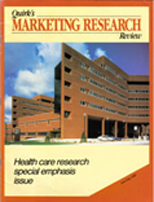One way they do this is through BaseLine, an on-line interactive and comparative data product from the Commission on Professional & Hospital Activities (CPHA). The system is designed to provide users with on-line access to their own data and to normative data from CPHA's large national base of hospital discharge data (over 300 discharges). Using the Michigan Terminal System, the mainframe at the University of Michigan, hospitals can quickly and inexpensively compare their own performance with CPHA's norms, look for overall trends and patterns and analyze individual patient records and physician activities.
Analyses can be performed on BaseLine in the ad hoc mode (using a relational database manager), on a microcomputer after down-loading from BaseLine, or via a flexible menu system. The system consists of three components: Databases, software packages and reports.
BaseLine's menus include a series of severity of illness reports (offering four different measures of severity), length of stay reports (including pre-and post-operative length of stay), total charges reports and reports that compare hospital performance to norms derived from CPHA's research database.
Fatality rates
CPHA has developed a sample report with BaseLine to show how the system works.
Let's say you wanted to compare a hospital's mortality rates for open-heart surgery with those of similar facilities and to investigate the quality issues that those numbers bring up. By employing BaseLine's ad hoc reporting capabilities, you can access the diagnosis related groups (DRGs) for open-heart surgery. Via BaseLine, you can enter CPHA's comparative files for fatality rates for urban hospitals in the north central region to pull up the comparative data you need to prepare a report. By selecting the appropriate DRG, you can create a report. Then to compare your own facility rates with those of peer hospitals, you can access your own data through BaseLine and compare it to statistics for urban hospitals in the same region.
If the system shows that your fatality rates are even lower than those of peer hospitals performing large numbers of operations, you may want to make the community more aware of your high quality service and possibly expand the operation. If, however, the percentages indicate that you were performing below peer fatality rates, an investigation of the service and physicians might be necessary in order to see where the problems lie. Or, by accessing your resource need units (RNUs) for these DRGs, and comparing them with other hospitals, you can see if your patients were sicker than most, of if there is a problem stemming from admissions -if other hospitals are "dumping" their tougher, more resource intensive cases.
BaseLine user
One BaseLine user is Scott Matthews, director of planning for Swedish Medical Center, Denver.
The Colorado Hospital Assn. has agreed to participate in the BaseLine system, making additional state-specific data bases available to Colorado hospitals. Any Colorado hospital with access to this system can then get comparative data and be able to create a variety of reports covering any time period within a matter of minutes.
According to Matthews, the SMC has access to three types of databases with BaseLine system:
(1) The hospital's historical patient care data beginning with two previous calendar years and including the hospital's most current data;
(2) Comparative data which provides information on more than 90 % of the discharges from the state. This includes CPHA's length of stay norms and other normative databases;
(3) Donnelley Marketing Information Services Population Demographics. This service analyzes a hospital's service area and its population trends. Besides geographic segmentation counts and projections by age, race and sex, census-based information includes families and households, income, education, housing, transportation and employment status.
Other databases available to Colorado hospitals are:
(1) The regional aggregate file that divides the state into several regions and summarizes individual patient record activity by zip code within the state.
(2) A hospital peer group base consisting of five peer hospitals the user selects. This base also includes individual patient records (individual hospital identities are concealed unless otherwise authorized by the participating hospitals).
BaseLine advantages
Matthews praises the capabilities of the on-line system which SMC started using in September, 1985, because prior to that, retrieving data was all done by hand.
"Once we got the data, we had to key it into our microcomputer, a project that took us weeks, even months to do. Now it takes us 10 minutes, or 30 minutes to do a major study and develop a report.
"We also like the idea that it's interactive, user-friendly and that we can down-load the system into our microcomputer to Lotus and then do graphics work. Another feature that makes the system attractive to us is that we can input commands so the computer program automatically runs at night. This allows us to access data at low after-hour rates and frees our microcomputer during the day so that we can work on other projects."
Editor's note: BaseLine is currently being used by over 100 hospitals and nine hospital associations all over the country. Users include planners, marketers, DRG coordinators, quality assurance professionals, medical records departments, and hospital administrators.
